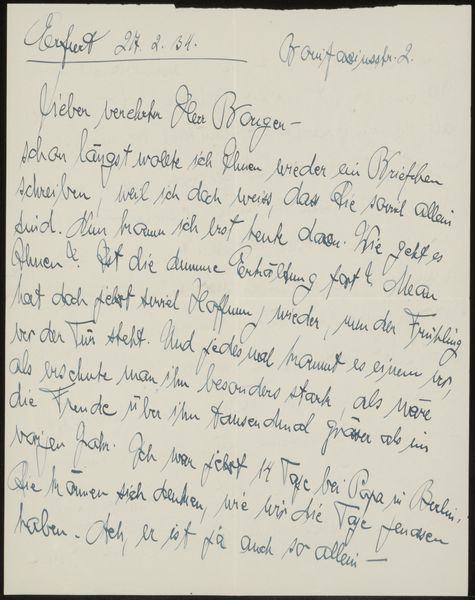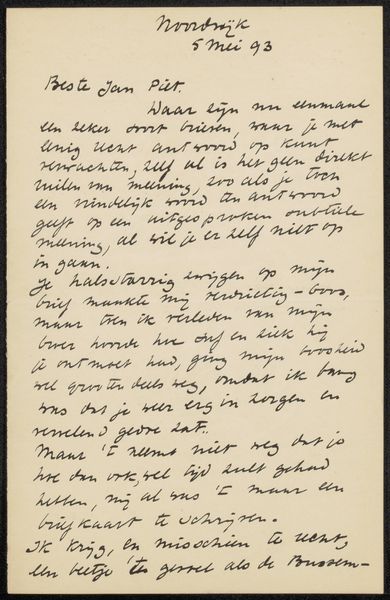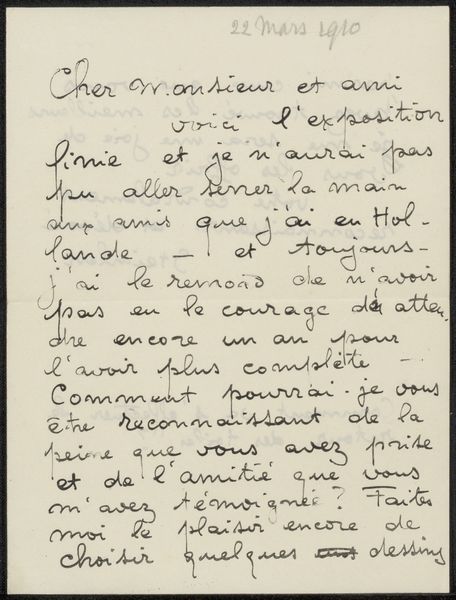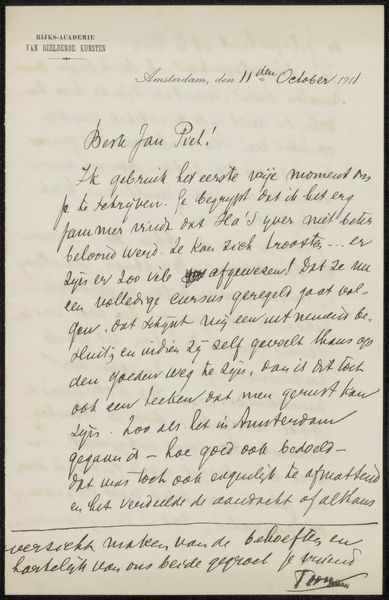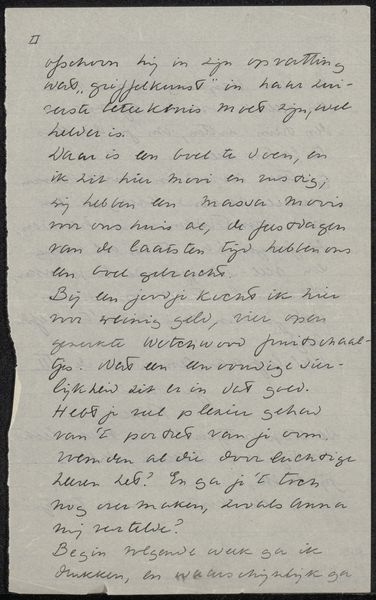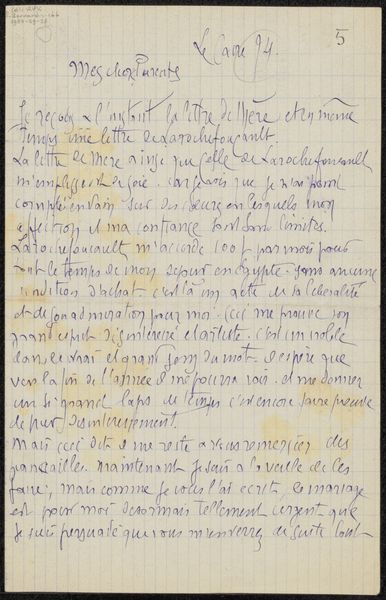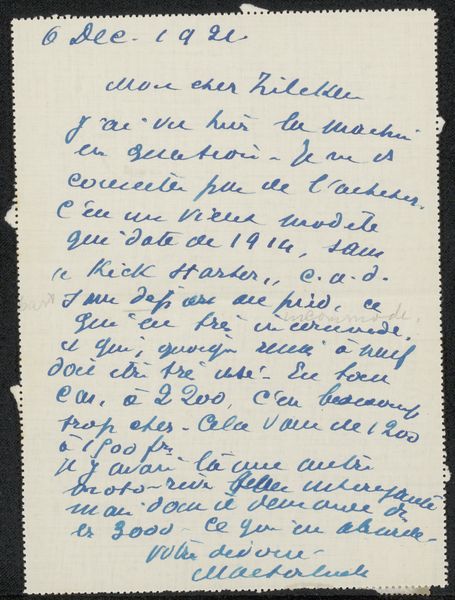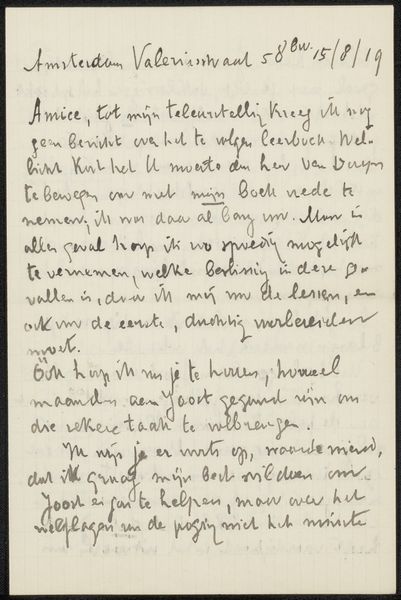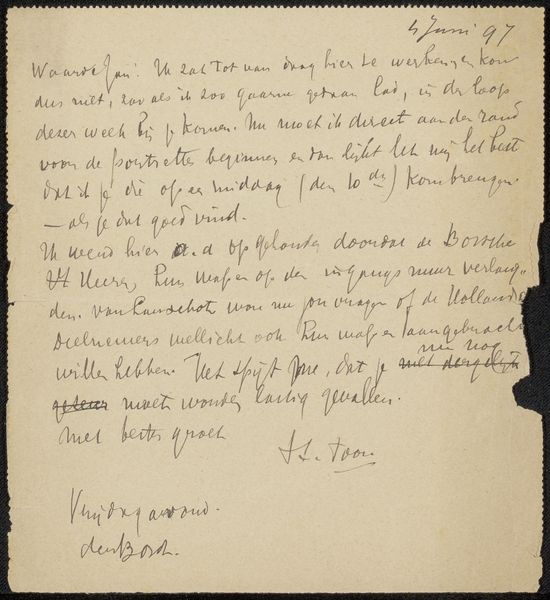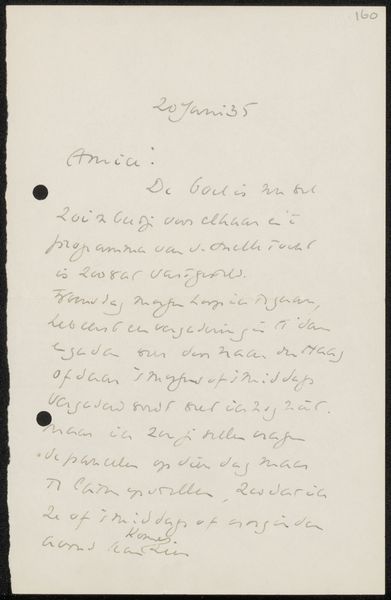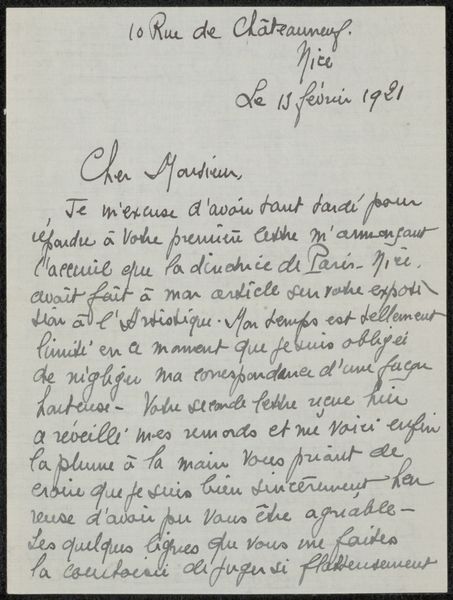
drawing, paper, ink
#
drawing
#
paper
#
ink
#
calligraphy
Copyright: Rijks Museum: Open Domain
Curator: Before us we have a piece entitled "Brief aan Philip Zilcken," created before 1928. It's a drawing executed in ink on paper. The author, whose name is not definitively listed, has produced a striking example of personal correspondence elevated to an art form. Editor: It immediately strikes me as something very intimate and delicate. The script is so flowing, almost like a musical score laid out on the page. It feels very personal. Curator: Indeed. The calligraphy style employed here isn’t just about transmitting words; it’s about imbuing them with emotion and meaning through the visual form. Each stroke, each curve, seems carefully considered. It invites us to consider, what meanings are embedded in these letterforms themselves, and how would this meaning have resonated with its intended recipient? Editor: It’s interesting how the handwritten letter—once a primary means of communication—takes on new significance in an era dominated by digital exchanges. It transforms into almost a symbolic object, imbued with nostalgia and a sense of preciousness that we rarely associate with our emails today. Curator: Precisely! There’s a cultural memory embedded within this medium. Calligraphy, like handwriting in general, carries the imprint of the author's personality, their emotional state at the time of writing. This particular example exudes both a sense of longing, but is anchored with confidence. Note how the strokes broaden at places like confident brushstrokes in East Asian calligraphy. Editor: I'm curious about Philip Zilcken. Receiving a letter like this, must have been more of a gift than correspondence, even though they were a constant stream in modern society during that period. Do we know anything about their relationship? Would the symbolism within have had further meaning between them, adding layers for the both of them? Curator: That’s an avenue worth exploring, though the beauty of a piece like this lies in its openness to interpretation even without specific contextual details. The universality of human emotion shines through in the deliberate, rhythmic script. Editor: Seeing it now, this work reminds us of the power held within the handwritten, reflecting personal expression that we often find difficult to encounter in current public mediums. A beautiful expression of that which cannot easily be uttered by other forms.
Comments
No comments
Be the first to comment and join the conversation on the ultimate creative platform.
